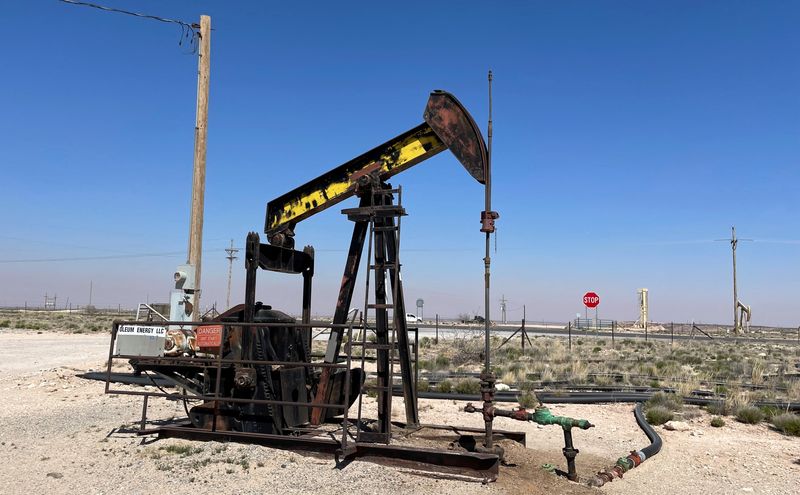By Nichola Groom and Valerie Volcovici
DUBAI (Reuters) -The Biden administration on Saturday unveiled final rules aimed at cracking down on U.S. oil and gas industry releases of methane, part of a global plan to rein in emissions that contribute to climate change.
The rules, two years in the making, were announced by U.S. officials at the United Nations COP28 climate change conference in Dubai. The United States and other nations attending the summit are expected to detail how they will achieve a 150-country pledge made two years ago to slash methane emissions by 30% from 2020 levels by 2030.
Methane tends to leak into the atmosphere undetected from drill sites, gas pipelines and other oil and gas equipment. It has more warming potential than carbon dioxide and breaks down in the atmosphere faster, so reining in methane emissions can have a more immediate impact on limiting climate change.
"These new standards will help us meet our international commitments to aggressively tackle climate change, while improving air quality for communities all across the country," U.S. Environmental Protection Agency Administrator Michael Regan told a news conference in Dubai.
Vice President Kamala Harris cited the methane regulations among several U.S. initiatives to fight global warming and said they showed the Biden administration had restored the United States as a global leader in the fight against climate change.
"Today, we are demonstrating through action how the world can and must meet this crisis," Harris she told the conference.
EPA's new policies would ban routine flaring of natural gas produced by newly drilled oil wells, require oil companies to monitor for leaks from well sites and compressor stations and establishes a program to use third party remote sensing to detect large methane releases from so-called "super emitters," the agency said in a statement.
The rules would prevent an estimated 58 million tons of methane from reaching the atmosphere between 2024 and 2038 - nearly the equivalent of all the carbon dioxide emissions from the power sector in the year 2021, EPA added.
New Mexico Governor Michelle Lujan Grisham, whose state already put in place methane regulations that served as a model for the EPA, said that the new methane rules enables the United States to lead by example and encourage other countries to take similar measures.
"Now we've got credibility to make sure that we can demonstrate to the whole world that we can hold polluters accountable and move the needle," she told the press conference.
Some environmental groups praised the rules.
"Strong methane standards are essential to curb climate pollution and better protect the health and safety of workers and communities living near fossil fuel extraction," Earthjustice's vice president of litigation for climate and energy, Jill Tauber, said in a statement.
The rule will produce climate and health benefits of up to $7.6 billion a year through 2038, EPA said. It will also increase recovery of up to $13 billion of natural gas over the time period.
The rule differs somewhat from draft proposals EPA released in 2021 and 2022, in part by giving the industry more time to comply.
The agency also tweaked the Super Emitter Program so that third parties send information on methane leaks to EPA directly for verification. Previously they would have been able to send the information directly to companies, a provision the oil and gas industry said would put too much power in the hands of environmental groups that search for methane leaks.
The American Petroleum Institute, an oil and gas industry trade group, said it was reviewing the rule.
"To be truly effective, this rule must balance emissions reductions with the need to continue meeting rising energy demand," Dustin Meyer, API senior vice president of policy, economics and regulatory affairs, said in a statement.

Exxon (NYSE:XOM) CEO Darren Woods told Reuters at COP28 that it still needs to review the rule but: "Conceptually, we're supportive of it as long as it's a reasonable and sound policy."
BP (LON:BP) said it "actively collaborated" with EPA as it worked on the final rule and "welcomes the finalization."